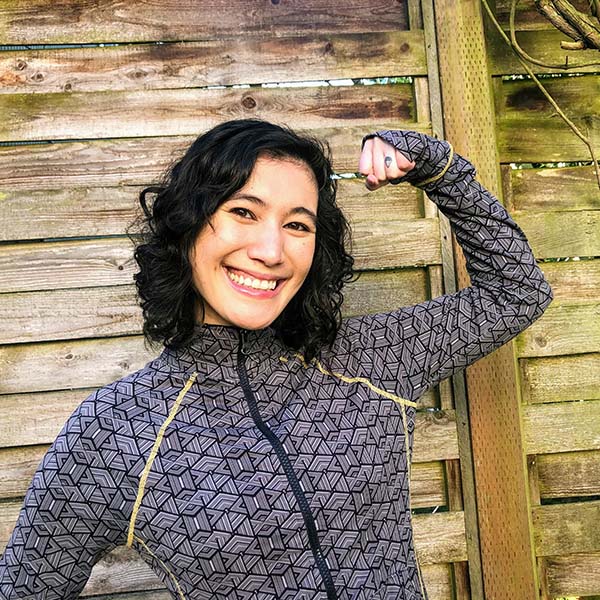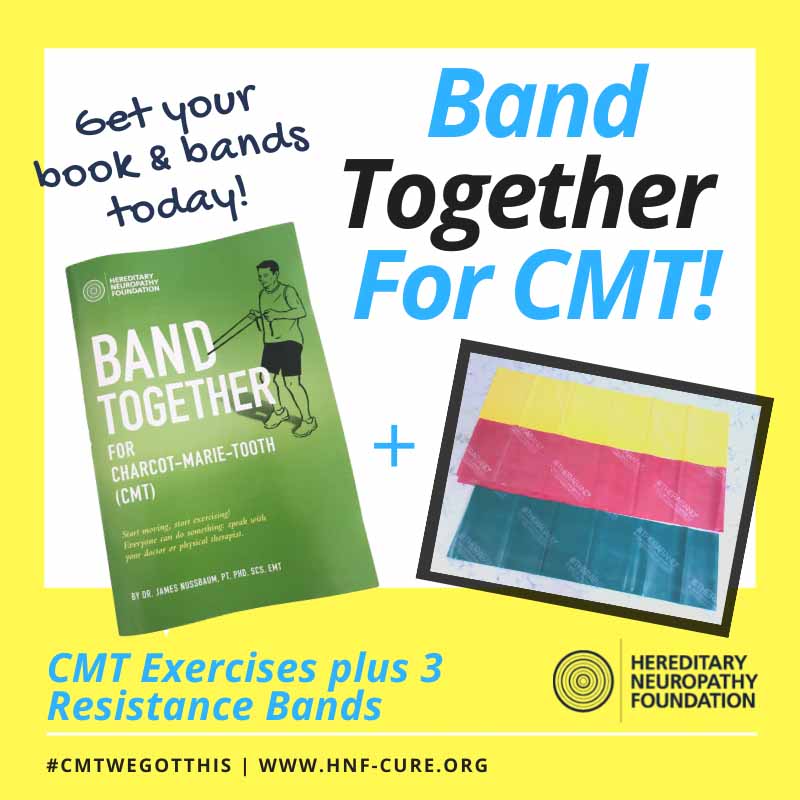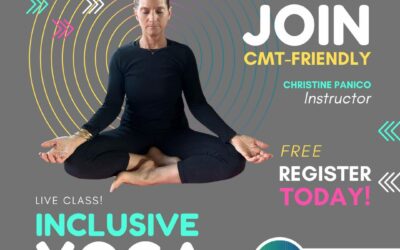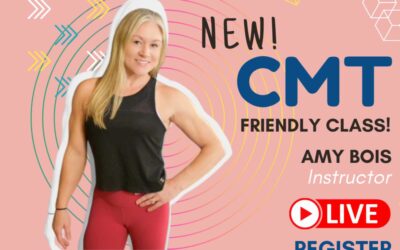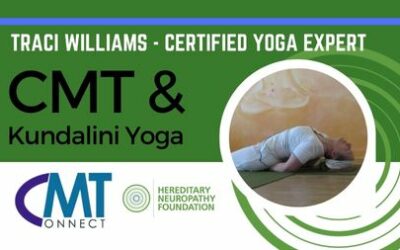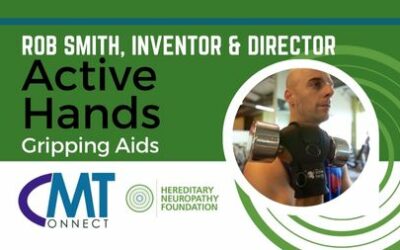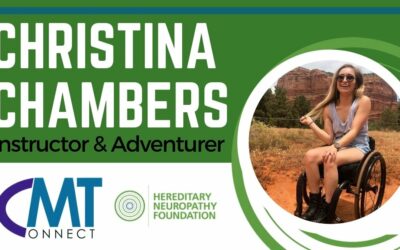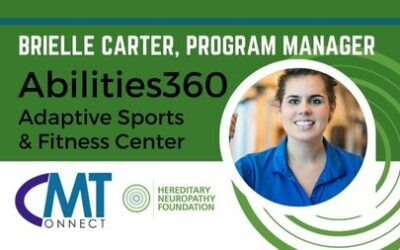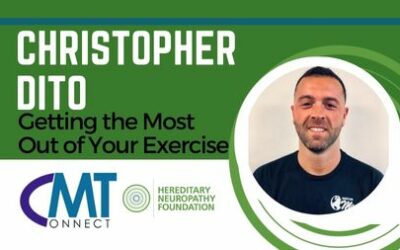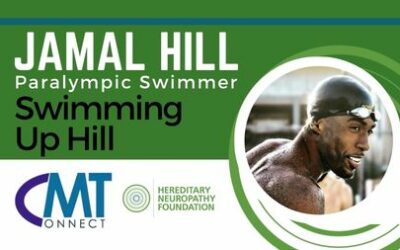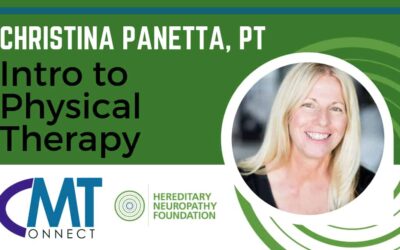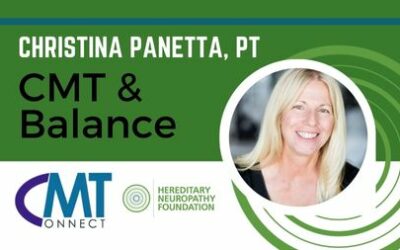The Hereditary Neuropathy Foundation believes that Physical Therapy (PT) and physical activity plays an essential role in physical and mental well being, especially for people affected by debilitating diseases like Charcot-Marie-Tooth.
Movement is Medicine™
The mission is to promote the safe adoption of a more active lifestyle through exercise and nutrition programs specifically created for those with disabilities.
Virtual CMT-Friendly Exercise Classes on Movement is Medicine™
LIVE & Recorded classes every month!
Physical Therapists
Physical therapists (PT) are specialists in helping people move and gain or maintain a healthy, active lifestyle. PT is especially an important modality to support CMT patients to help minimize pain, improve strength, balance and sensation with a goal to help maintain and to restore mobility.
Children
If your son or daughter has CMT you would want to consult a physical therapist who is a pediatric clinical specialist (PCS).
Adults
As an adult with CMT, an orthopedic clinical specialist (OCS) or a neurologic clinical specialist (NCS) might both be helpful depending on their clinical experience with people with CMT and/or other progressive muscle diseases.
You can help!
Tell us about your experience with PT & Exercise.
Band Together For CMT
Helping CMT patients get and stay physically active.
“Start where you are. Use what you have. Do what you can.”
– Arthur Ashe
Resistance bands are a great place to start towards a better and stronger you!
Build strength while boosting stamina, flexibility, range of motion and more!
Get your exclusive guide book of CMT-specific exercises plus 3 bands with every $25 donation.
Let’s Band Together for CMT today!
More on Physical Therapy
Contracture Management
CMT patients often develop foot and hand deformities. It is important to prevent or slow down development of contractures (loss of motion of your joints due to the shortening of muscles, ligaments or other tissues around the joints), especially for the joints in your hands and feet as they significantly complicate shoe wear, walking and dressing.
Physical therapists can help by teaching you how to perform daily range of motion exercises or using positioning to slow the progression of loss of motion. They will work closely with Occupational Therapists to help you maintain strength, motion and function in your hands. For your feet and ankles, they work closely with the orthotist (brace maker) or the orthopedic surgeon if exercise and positioning are not enough and surgery is needed.
Proprioception
Sensory changes in your feet may make walking and balance more difficult, and it is important to understand how to manage your daily activities within the limits of impaired sensation.
Learning to use your vision to substitute for missing sensation in your feet can improve balance and help decrease falls. A physical therapist can develop an individualized program to address these issues.
Endurance
It is important for everyone to perform an adequate amount of physical activity every day. The Department of Public Health recommends at least 30 minutes of daily activity, such as walking, swimming, cycling or other recreational activity. For children, 60 minutes daily is recommended.
Physical therapists teach you how to safely participate in the kinds of physical activities you enjoy so you get enough exercise to maintain an optimal level of endurance and fitness. They collaborate with personal trainers and other fitness instructors so that you can safely use weight training equipment, treadmills or other gym equipment.
Assistive devices
There are numerous assistive devices that can be used to improve your balance and decrease fatigue while walking. Assistive devices such as braces and crutches or canes increase your ability to walk with a reduced risk of falling and fatigue from weakened foot or leg muscles. The PT can ensure what devices fit you well and that you have the information you need to decide which device is best for you. They will also assist with the fitting and use of wheelchairs or scooters for longer distance transportation should that become necessary.
Bracing & AFOs
Many CMT patients consequently need to wear special footwear, foot orthoses and ankle-foot orthoses (AFOs) to maintain independent ambulation. But there are a variety of braces available for ankles, knees, feet, hands, and other areas weakened by CMT. Even your neck and spine can be braced. For many with CMT, braces can bring newfound ability to walk quickly and smoothly and provide greater independence in everyday activities.
Learn more about Bracing here.
Pain
Sometimes people with CMT will have pain from overuse or from altered activity patterns caused by muscle weakness or contractures. Physical therapy offers many techniques for reducing pain without medication. For more information see Pain & CMT.
Other Resources
- AdventHealth
- To find a licensed health care professional visit the APTA.
Virtual Chair Yoga, Healthy Heart & Backs to the Mat
Virtual Chair Yoga, Healthy Heart & Backs to the Mat
Meet Amy Bois FUNctional Ambassador
Amy Bois is a titan in the fitness industry and in the adapted fitness world. She lives in Greenland, New Hampshire, where she not only trains individuals of all abilities under her Fit For Life banner, but is also the chair of the Spina Bifida Association of Greater New England.
Kundalini Yoga Webinar
Kundalini yoga is a holistic yoga that incorporates repetitive physical movement and sometimes static postures timed with breath-work, chanting, meditation, and relaxation.
Active Hands
Hear from Rob Smith, Inventor and Director of Active Hands and learn about these life-impacting products designed especially for people living with reduced hand function.
Christina Chambers Ability360
Meet Christina Chambers, dancer, adventurer, advocate and Abiitity360 Instructor!
Ability360 CMT-Connect Webinar
We speak with Ability360 Program Manager, Brielle Carter about her adaptive sports and recreation center specially designed for people with disabilities.
CMT & Exercise: Made for Modus
Get the most out of your exercise! Join Estela and expert, Chris Dito (CMT patient and biomechanics specialist) as they discuss the dos and don’ts of exercising.
Jamal Hill ~ Paralympic Swimmer
We spoke with Paralympic swimmer, Jamal Hill about how he got started swimming, what it takes to make it to the Paralympics, his CMT journey and much more!
Panetta Physical Therapy Webinar
Join us for an introduction to Physical Therapy.
CMT & Balance Webinar
Discuss the balance issues that accompany CMT and review some PT movements to promote improvement.



